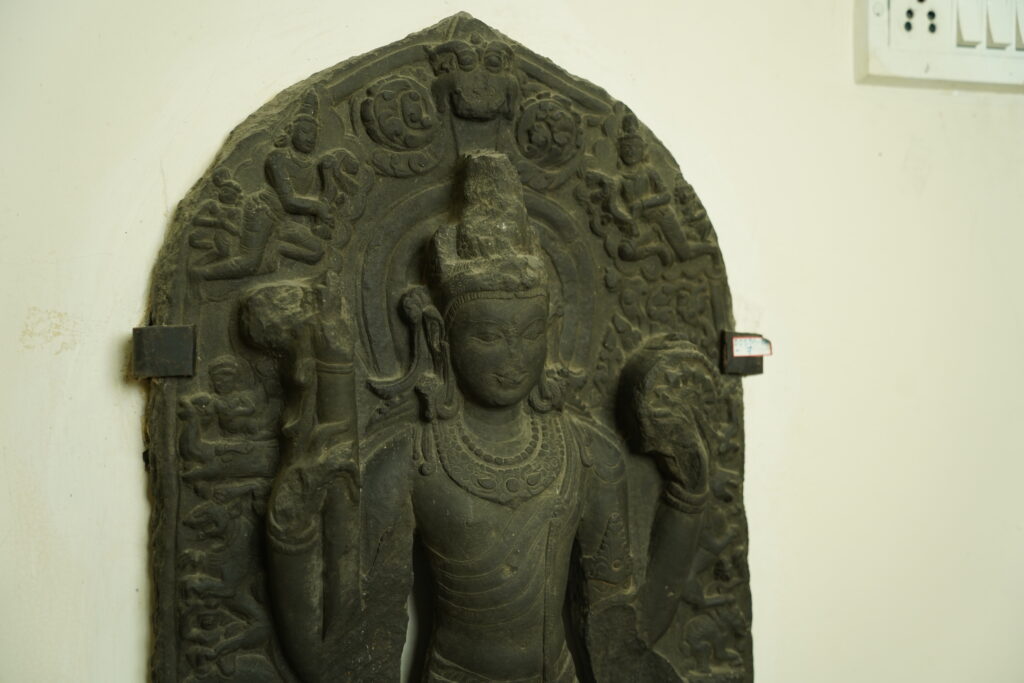In the annals of Bengal’s rich cultural heritage, the Pal and Sen eras stand out as golden periods of artistic achievement. Spanning roughly from the 8th to the 12th centuries, these periods witnessed a flourishing of sculpture that left an indelible mark on the artistic landscape of the region. Characterized by exquisite craftsmanship, intricate detailing, and a profound spiritual undertone, the sculptures of the Pal and Sen era continue to captivate and inspire admirers centuries later.
The Pal dynasty, which ruled over Bengal from the 8th to the 12th centuries, was instrumental in fostering a renaissance of art and culture. It was during this period that the famous Pala School of Sculpture emerged, producing some of the most iconic masterpieces in Indian art history. The Pal sculptures, primarily influenced by Buddhist and Hindu themes, adorned temples, stupas, and monasteries across the region.
One of the distinguishing features of Pal era sculpture is its synthesis of diverse artistic traditions. Drawing from Indian, Southeast Asian, and even Central Asian influences, Pal sculptures exhibit a unique blend of styles that reflect the cosmopolitan nature of the period. The depiction of deities and mythological figures in various poses and mudras (hand gestures) showcases the mastery of the artisans in conveying spiritual concepts through visual imagery.
The Sen dynasty succeeded the Pal rulers and continued the legacy of artistic patronage in Bengal. The Sen period, which lasted from the 12th to the 13th centuries, witnessed further innovation and experimentation in sculpture. Under the patronage of the Sen rulers, artisans continued to explore new themes and motifs, enriching the artistic vocabulary of the region.
One of the most enduring legacies of the Sen era is the terracotta temples of Bengal. These intricately crafted temples, adorned with terracotta panels depicting scenes from mythology, daily life, and religious rituals, represent a pinnacle of architectural and sculptural achievement. The terracotta panels, with their vivid portrayal of human emotions and experiences, offer a glimpse into the cultural milieu of medieval Bengal.
The sculptures of the Pal and Sen eras not only serve as aesthetic marvels but also bear testimony to the religious and philosophical currents of the time. Whether in the serene expressions of Buddha or the dynamic poses of Hindu deities, these sculptures embody the spiritual aspirations and cultural ethos of Bengal’s past. Moreover, they provide invaluable insights into the social, political, and economic dynamics of medieval Bengal, reflecting the interplay of various cultural influences and historical developments.
Despite the passage of centuries, the sculptures of the Pal and Sen era continue to inspire awe and admiration. Preserved in museums, archaeological sites, and religious institutions, these timeless masterpieces serve as a tangible link to Bengal’s glorious past. Moreover, they remind us of the enduring power of art to transcend time and space, touching the hearts and minds of people across generations.
In conclusion, the sculptures of the Pal and Sen era represent a high watermark in the artistic heritage of Bengal. Through their exquisite beauty, technical virtuosity, and profound spiritual resonance, these sculptures continue to enrich our understanding of Bengal’s cultural legacy and remind us of the enduring legacy of human creativity and ingenuity.

